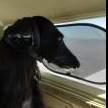Safe Landing Distance
-
Members Online
- amillet
- Rmfriday
- bluehighwayflyer
- toto
- MikeOH
- IvanP
- Mcstealth
- Parker_Woodruff
- phxcobraz
- N201MKTurbo
- Steve Dawson
- Slick Nick
- Fly Boomer
- Skyland
- MooneyMax
- Mmrkulic
- MDMooney
- DonMuncy
- PT20J
- Crawfish
- ad5ut
- PaulM
- aviatoreb
- hammdo
- M20F
- billy hellcat
- drstephensugiono
- ta2too
- McMooney
- Meshach
- Immelman
- FlyingDude
- Ragsf15e


Recommended Posts